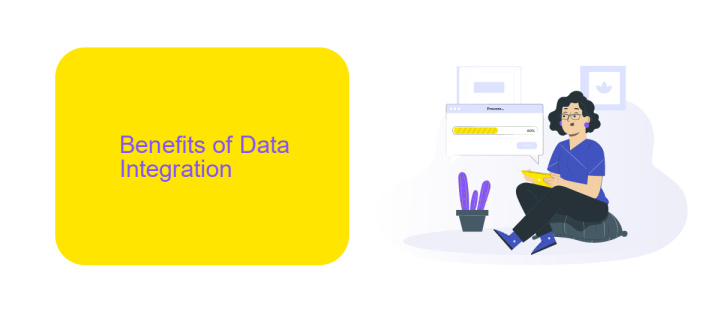Data Integration Graphic
Data integration graphics play a crucial role in modern data management by visually representing the merging of disparate data sources into a unified view. These graphics simplify complex processes, making it easier for businesses to analyze and interpret data. By leveraging effective data integration visuals, organizations can enhance decision-making, improve efficiency, and gain deeper insights into their operations.
Data Integration Overview
Data integration is a critical process that involves combining data from different sources to provide a unified view. This integration is essential for organizations to make informed decisions, enhance operational efficiency, and gain a competitive edge. By seamlessly merging data from various systems, businesses can ensure consistency and accuracy in their data analytics and reporting.
- Combines data from multiple sources
- Ensures data consistency and accuracy
- Enhances decision-making and operational efficiency
- Supports comprehensive data analytics and reporting
One of the tools that facilitate data integration is ApiX-Drive. This service allows users to automate data transfer between different platforms without the need for coding. ApiX-Drive supports a wide range of applications, enabling seamless integration and synchronization of data. By using such tools, businesses can streamline their data workflows, reduce manual errors, and save valuable time.
Benefits of Data Integration

Data integration offers numerous benefits, including the ability to consolidate information from various sources into a unified view. This consolidation enhances data accuracy and consistency, which is crucial for making informed business decisions. By integrating data, organizations can eliminate data silos and ensure that all departments have access to the same information, leading to improved collaboration and operational efficiency. Additionally, integrated data systems can streamline processes, reduce redundancy, and lower operational costs.
Moreover, data integration enables advanced analytics and reporting by providing a comprehensive dataset. Tools like ApiX-Drive facilitate seamless data integration by connecting various applications and automating data workflows. This not only saves time but also minimizes the risk of errors associated with manual data handling. With integrated data, businesses can gain deeper insights, identify trends, and respond more swiftly to market changes. Ultimately, data integration empowers organizations to leverage their data assets fully, driving innovation and competitive advantage.
Challenges of Data Integration

Data integration is a complex process that involves combining data from different sources to provide a unified view. One of the primary challenges is ensuring data quality and consistency. Disparate data sources often have different formats, structures, and standards, making it difficult to merge them seamlessly. Additionally, maintaining up-to-date data in real-time can be challenging due to latency issues and the need for continuous synchronization.
- Data Quality: Ensuring that data from different sources is accurate, complete, and consistent.
- Data Security: Protecting sensitive information during the integration process.
- Scalability: Handling large volumes of data without compromising performance.
- Compatibility: Integrating data from various systems with different formats and standards.
- Real-time Integration: Ensuring that data is updated in real-time across all systems.
To address these challenges, tools like ApiX-Drive can be invaluable. ApiX-Drive offers automated data integration solutions that simplify the process of connecting different systems. By providing a user-friendly interface and robust support for various data formats, ApiX-Drive helps ensure data quality, security, and real-time synchronization, making it easier to achieve seamless data integration.
Data Integration Tools and Solutions

Data integration tools and solutions are essential for businesses looking to streamline their data processes and ensure seamless data flow across various systems. These tools help in aggregating, transforming, and loading data from multiple sources into a unified system, providing a comprehensive view of the organization's data landscape.
One of the key players in this field is ApiX-Drive, a versatile platform that simplifies the integration process. ApiX-Drive offers a user-friendly interface and a wide range of pre-built connectors, making it easy for businesses to connect different applications without the need for extensive coding knowledge.
- Automated data synchronization
- Real-time data updates
- Customizable workflows
- Scalability to handle large data volumes
By leveraging tools like ApiX-Drive, businesses can enhance their data integration strategies, reduce manual intervention, and improve overall operational efficiency. These solutions not only save time but also ensure data accuracy and consistency across all integrated systems.
Best Practices for Data Integration
Effective data integration begins with a clear strategy and understanding of the data sources and destinations involved. It's essential to map out the data flow and ensure data consistency and accuracy across systems. Leveraging automated tools like ApiX-Drive can simplify this process by providing seamless integration capabilities, reducing manual intervention, and minimizing errors. Always ensure that data is cleaned and transformed appropriately before integration to maintain data quality and reliability.
Another best practice is to establish robust data governance policies. This includes setting up access controls, monitoring data usage, and ensuring compliance with relevant regulations. Regularly updating and maintaining integration workflows is crucial to adapt to any changes in data sources or business requirements. Utilizing services like ApiX-Drive can also help in monitoring and managing integrations effectively, providing real-time insights and alerts to address any issues promptly. By following these best practices, organizations can achieve efficient and reliable data integration, driving better decision-making and operational efficiency.
FAQ
What is Data Integration Graphic?
Why is Data Integration important?
How can I automate Data Integration processes?
What are the benefits of using a Data Integration service?
How do I ensure data security during integration?
Time is the most valuable resource for business today. Almost half of it is wasted on routine tasks. Your employees are constantly forced to perform monotonous tasks that are difficult to classify as important and specialized. You can leave everything as it is by hiring additional employees, or you can automate most of the business processes using the ApiX-Drive online connector to get rid of unnecessary time and money expenses once and for all. The choice is yours!

